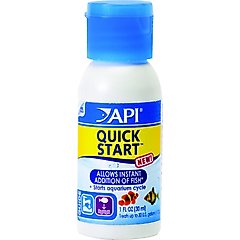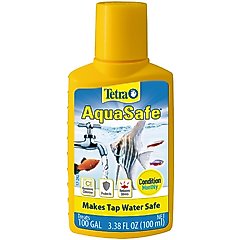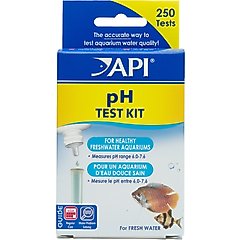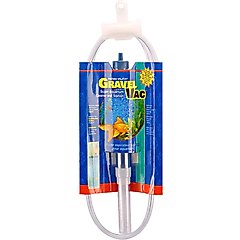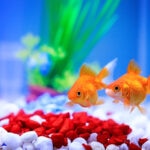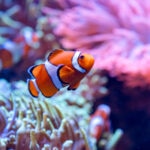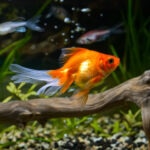Freshwater Aquarium Tank Cycling: How To Cycle a Fish Tank With Fish
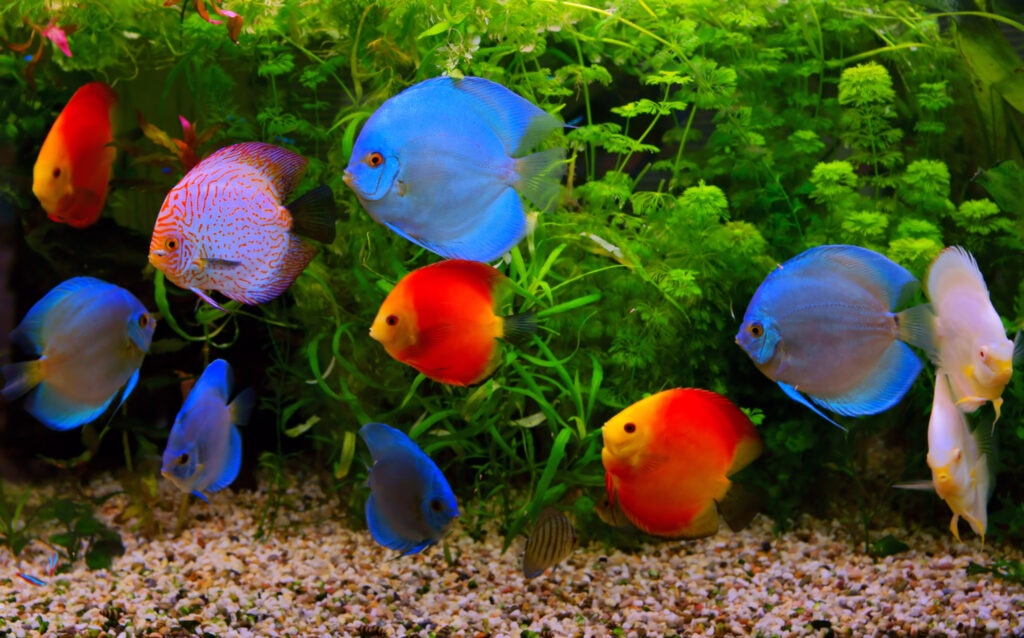
Photo by MirekKijewski/iStock / Getty Images Plus
Cycling a freshwater aquarium refers to the process of allowing beneficial bacteria that break down waste to grow in the filter, water column, and substrate. This is required to prevent fish from living through a dangerous period where ammonia and nitrite levels peak and then fall, which can lead to health problems.
This tank cycling should be carefully done before fish are added to a fish tank. Fortunately, there are products available that enable cycling with fish already in a tank, and these products also speed up the process.
Key Takeaways
- It usually takes four to six weeks to establish a proper biological filter in a fish tank.
- You can use bacteria cultures to quickly start the process.
- The best way to cycle a new tank involves using a handful of gravel or filter media from an established tank.
- Tank cycling should be completed before adding new fish to your tank.
Why Is Fish Tank Cycling Important?
Fish tank water cycling helps maintain and establish a proper nitrogen cycle, which is important to keep your fish healthy. This is especially important when adding new fish to your tank to prevent issues like new tank syndrome.
Understanding the Nitrogen Cycle in Fish Tanks
The nitrogen cycle in fish tanks includes the following steps:
- Waste in a fish tank produced by fish or by adding in fish food breaks down into ammonia, which is highly toxic to fish.
- Ammonia is converted to nitrite (also toxic) by beneficial bacteria.
- Nitrite is then converted to nitrate by beneficial bacteria.
- Nitrate is removed by water cycling and is utilized by live plants.
This process relies on the presence of beneficial bacteria. These bacteria are found everywhere. Trace amounts will come in with your fish, substrate, plants, and anything else that goes in the tank.
However, under normal circumstances, it takes four to six weeks for these trace amounts to grow into a fully mature biofilter.
Quick Tank Cycling Options
Many products are available to jump-start the nitrogen cycle process. One common option is API Quick Start Freshwater & Saltwater Aquarium Water Treatment. The treatments, also called bacteria cultures, provide enough bacteria for your fish tank while seeing very minor peaks with ammonia and nitrite.
Recommended Product
It’s impossible to overdose with these products, so they can be added if your fish look stressed after performing filter maintenance.
Remember that these filtering bacteria are alive. You have to dechlorinate the water before adding your bacteria cultures.
You should also let the temperature stabilize and check to make sure the pH is in an acceptable range (varies by species, but for most tanks, 6.5–8.00 is fine).
Recommended Products
An alternative to using commercial bacteria starter cultures is to use a handful of gravel or filter media from an established tank. This is the best way to cycle a new tank, since the bacteria have already been living in a fish tank environment.
How To Cycle Freshwater Aquariums
The most important step when cycling a tank is to have patience. This is a natural process and takes time.
- Cycling a tank without introducing bacteria from an established tank (not recommended) takes about four to six weeks.
- Cycling a tank utilizing a bacteria starter culture is nearly instantaneous.
- Check ammonia and nitrite levels while cycling. If you see elevated levels, you can add more bacteria.
- If you have elevated ammonia or nitrite levels and your fish seem stressed, you can also add an ammonia binder. Signs of stress in fish include rapid breathing, lethargy, or erratic swimming.
Troubleshooting Tank Cycling Problems
Food Waste
While utilizing a bacteria starter culture may help cycle a tank quickly, you can still overwhelm the tank filter by overfeeding your fish.
Feed your fish sparingly while your tank is maturing. Feeding fish every other day should be fine. If any food accumulates on the bottom, then you’re overfeeding your fish.
Remove any excess food as quickly as possible with a net or siphon.
Recommended Products
Plants for Extra Filtration
Live plants in the aquarium can add extra filtration to your tank. Quick-growing plants utilize ammonia directly (and less efficiently utilize nitrate as well).
Water sprite, hygrophila, and jungle val are all good options.
Fishless Cycling
You may be wondering: “If the cycling period can be stressful on fish, then why aren’t tanks cycled without fish?”
While this can be done, it comes with challenges.
To cycle a tank without fish, you have to constantly add ammonia to the tank, otherwise the bacteria won’t grow to a population big enough to support fish. Your tank’s filter will be much better suited for your fish population if you start with a small number of fish and add beneficial bacteria.
Best Fish Species for Tank Cycling Success
Ideally, cycling a tank using bacteria starter cultures doesn’t lead to any elevated ammonia or nitrite, but it’s still best to choose hardy fish species for your tank.
Some of the strongest (and most beginner-friendly!) fish to keep in a freshwater tank or pond include:
- Danios
- Tiger or rosy barbs
- Black skirt tetras
- Most cichlids
- Catfish
- Shubunkins
- Sarasas
- Pond comets
Cycling a freshwater aquarium can be easy as long as you have the proper tools in place. If you have any questions about your tank’s cycling process or have concerns about your fish, reach out to a fish specialist.
Attributions
This article was reviewed for accuracy by Sean Perry, DVM.
